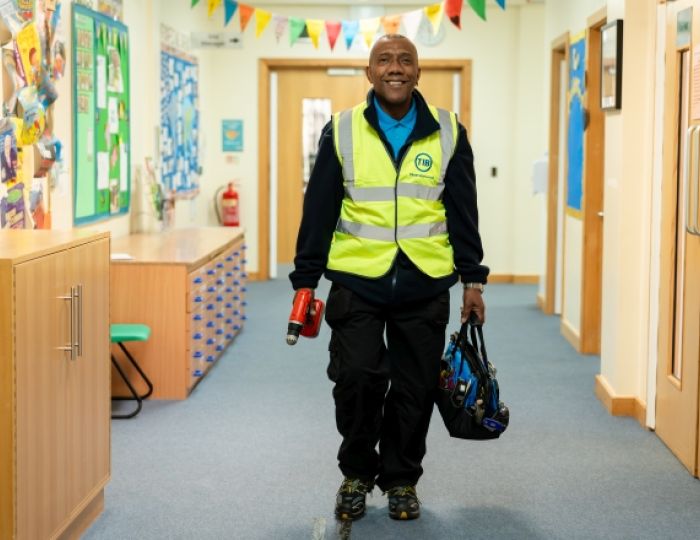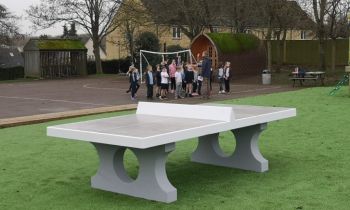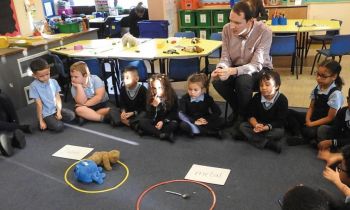Exclusions in primary schools have a marked impact on our children’s futures.
Students excluded in primary school have a far more challenging time transitioning into mainstream schools later on.
Those excluded throughout their school experience have far lower rates of permanent employment and far higher rates of criminal convictions.
To begin with, let me clear up a common misconception. There are different kind of exclusions that students can be given. Too often, when you read about them, permanent exclusions are often made to sound like the only kind.
Permanent exclusions are the most severe, where a child is taken off a school’s roll and can no longer attend, but they are also the rarest kind.
Given that they are the rarest, it is perhaps even more shocking that in 2017/18 there were 7,900 permanent exclusions from schools in England – a 70 per cent increase since 2012/13. So, what happens to these children once they are permanently excluded?
What it’s like in a pupil referral unit
Once children are permanently excluded they go to a Pupil Referral Unit (PRU). The main problem with a PRU is that it only has children who have behavioural challenges. Due to this, the staff’s time is really only taken up with behaviour management – not with learning.
I have spent a disproportionate amount of time doing arts and crafts with primary school children sent to a PRU. There’s a point at which ‘mindfulness’ only goes so far, and you do actually need to learn something. Arts and crafts becomes the new norm, and English and maths lessons a distant memory.
I don’t deny for a second that children in PRU’s, of any age, can be absolute nightmares. There’s no point dressing that up. They will threaten (or enact) violence, tell you they hate you, and absolutely refuse to do any work. But they’re human. It’s an obvious point but it has to be remembered.
From the point of exclusion in primary school onwards they’re treated as an inconvenience.
Those that work with these children must have the patience of a saint; however awful they may be to you it’s crucial to ensure they are listened to and feel safe.
They need the very best teachers to turn the situation around and yet students in PRUs are twice as likely to be supported by unqualified staff.
Many children referred to PRUs in primary school have serious problems around attachment. They will try everything possible to push you away because they’re simply so used to being hurt or left that they don’t want to let anyone close.
That can be really hard to remember when you’re exhausted and have been nothing but nice to them, but perseverance pays off. It can take months to build a bond with many of these children but I’ve seen first-hand how incredible it is when that’s achieved.
If a child has been excluded then they often have an incredibly complex range of needs. It is worth noting that students with Special Educational Needs (SEN) are far more likely to be excluded than their peers.
This is particularly the case for students with Attention Deficit Hyperactive Disorder (ADHD) – 39 per cent of young people who have ADHD have fixed term exclusions.
The other side of exclusions
However, the picture can often be painted to depict students as innocent victims of an unfair system. This is very far from always being the case. I have had students come at me with scissors, punch walls, attempt to climb through windows… the list goes on.
Sometimes, students are such a risk to themselves and others that a mainstream school simply won’t work for them. They need a smaller ratio of teaching staff to have the supervision they need for safeguarding reasons.
Aside from the needs of these individual students, there is the wider impact their behaviour has on learning of other students.
A constant battle I face, is between knowing full well that keeping a child in mainstream school is the best thing for them – versus, acknowledging that they are making learning almost impossible for others.
If you have a primary school child flipping tables and swearing at the teacher then others are not able to learn and, perhaps more importantly, are scarred by the experience.
The latest Department for Education figures reveal that 62 Year 1 children and 163 Year 2s were in PRUs in 2018, rising to 454 in Year 6. Those figures sound shocking, but the challenges that teachers (and fellow students!) are facing is very real.
So, what can primary schools do about this?
First and foremost, it comes down to investment. At the broadest scale this must come from the government and I am very aware that I write at a time where there are cuts across the country.
However, even on limited funds, there are choices that have to be made. A key priority must be investing in SEN specialist staff to support students learning and behaviour.
Consider: not investing in new technology, but instead getting an SEN or SEMH (social, emotional, mental health lead). Recruiting specialist staff (or training staff you currently have!) to support children’s needs can be the difference between keeping them in school and losing them to a downward spiral.
As hard as the choices are, we have a responsibility to fight for every child’s future.
This is closely interlinked with the need for early intervention. Spotting behavioural patterns early and attempting to remedy this with clear routines and expectation setting can make a big difference.
As harsh as it may sound, don’t let things slide because they’re six and it’s sort of endearing when they have a strop. It will not remain endearing. If we expect a lot of students from an early age, they will often meet or even exceed those expectations.
By this, I do not necessarily mean academic targets – which great pressure is placed around. Rather, I mean expectations around students being well mannered, kind to one another and ready to try their hardest.
It’s absolutely crucial to develop close working relationships between parents and, where needed, social services to achieve this. You can establish routines and values at school, but if this isn’t mirrored at home then you’re fighting a losing battle.
In my experience, this can be the hardest part of the process. Building a relationship with families takes time which teachers often don’t have. Again, having a specialist member of staff whose role includes this kind of work is invaluable.
Finally, please only use exclusions as an absolute last resort. It can feel as if they make everyone’s lives easier – not least the lives of other children in the school, but the consequences for excluded children are severe.
There are so many other things to try before it gets to the point where an exclusion should even be considered: behaviour contracts, sticker charts, clear sanctions, coming in to school for half days and building back up from there, one on one or small group interventions… The list goes on!
All of this takes time but it is time invested in our children’s futures and that is time very well worth spending.
Parents have responsibility
Teachers can only do so much to support children. Ultimately, much of the responsibility lies with families/carers to support their child’s discipline and approach to learning.
Parents can be taken to court if their child does not attend school for an extended period, but that is just the beginning. Parents have a responsibility to actively engage with school life and what teachers are telling them. This includes following through on sanctions that school may give so that there is consistency for children.
Likewise, schools must try to reach out and support these families as it is often the whole unit around a child that needs to be engaged to prevent exclusion.
Emma Tonny is a former member of staff at a pupil referral unit and currently works as an intervention and inclusion specialist.










